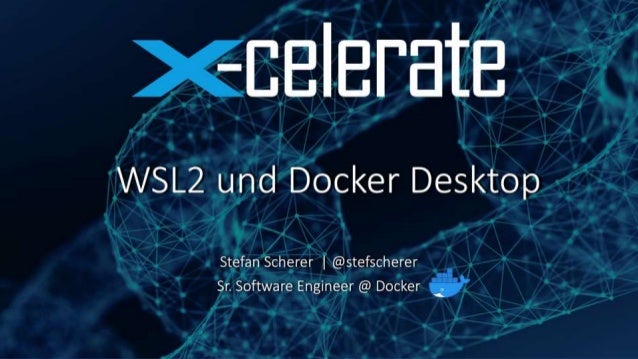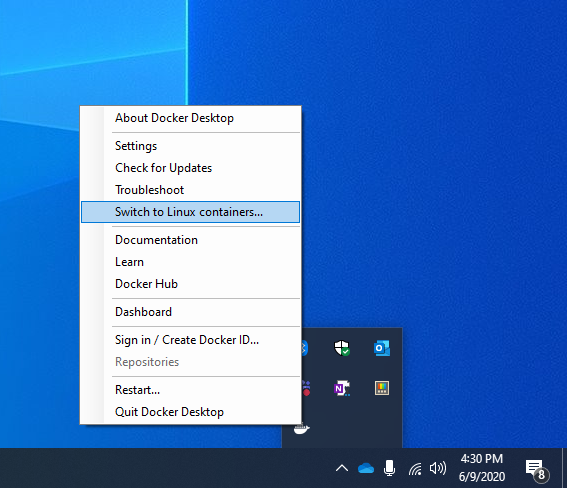Starting with Docker Desktop 3.0.0, updates to Docker Desktop will be available automatically as delta updates from the previous version. When an update is available, Docker Desktop automatically downloads it to your machine and displays an icon to indicate the availability of a newer version. I just downloaded and installed Docker. How is it running an old VM? Why did it download an old ISO? Anyway, I ran the delete, download, and init commands. Docker now started, and did so without asking me for a password. Moral of the story: There’s an out-of-date Docker ISO that needs a password to run.
Estimated reading time: 6 minutes
Docker Desktop for Windows is the Community version of Docker for Microsoft Windows.You can download Docker Desktop for Windows from Docker Hub.
By downloading Docker Desktop, you agree to the terms of the Docker Software End User License Agreement and the Docker Data Processing Agreement.
Docker Desktop Download Without Login Page
System requirements
Your Windows machine must meet the following requirements to successfully install Docker Desktop.
Hyper-V backend and Windows containers
Windows 10 64-bit: Pro, Enterprise, or Education (Build 17134 or higher).
For Windows 10 Home, see System requirements for WSL 2 backend.
- Hyper-V and Containers Windows features must be enabled.
The following hardware prerequisites are required to successfully run ClientHyper-V on Windows 10:
- 64 bit processor with Second Level Address Translation (SLAT)
- 4GB system RAM
- BIOS-level hardware virtualization support must be enabled in theBIOS settings. For more information, seeVirtualization.
WSL 2 backend
- Windows 10 64-bit: Home, Pro, Enterprise, or Education, version 1903 (Build 18362 or higher).
- Enable the WSL 2 feature on Windows. For detailed instructions, refer to the Microsoft documentation.
The following hardware prerequisites are required to successfully runWSL 2 on Windows 10:
- 64-bit processor with Second Level Address Translation (SLAT)
- 4GB system RAM
- BIOS-level hardware virtualization support must be enabled in theBIOS settings. For more information, seeVirtualization.
- Download and install the Linux kernel update package.
Note
Docker supports Docker Desktop on Windows for those versions of Windows 10 that are still within Microsoft’s servicing timeline.
What’s included in the installer
The Docker Desktop installation includes Docker Engine,Docker CLI client, Docker Compose,Notary,Kubernetes,and Credential Helper.
Containers and images created with Docker Desktop are shared between alluser accounts on machines where it is installed. This is because all Windowsaccounts use the same VM to build and run containers. Note that it is not possible to share containers and images between user accounts when using the Docker Desktop WSL 2 backend.
Nested virtualization scenarios, such as running Docker Desktop on aVMWare or Parallels instance might work, but there are no guarantees. Formore information, see Running Docker Desktop in nested virtualization scenarios.
About Windows containers
Looking for information on using Windows containers?
- Switch between Windows and Linux containersdescribes how you can toggle between Linux and Windows containers in Docker Desktop and points you to the tutorial mentioned above.
- Getting Started with Windows Containers (Lab)provides a tutorial on how to set up and run Windows containers on Windows 10, Windows Server 2016 and Windows Server 2019. It shows you how to use a MusicStore applicationwith Windows containers.
- Docker Container Platform for Windows articles and blogposts on the Docker website.
Install Docker Desktop on Windows
Double-click Docker Desktop Installer.exe to run the installer.
If you haven’t already downloaded the installer (
Docker Desktop Installer.exe), you can get it from Docker Hub. It typically downloads to yourDownloadsfolder, or you can run it from the recent downloads bar at the bottom of your web browser.When prompted, ensure the Enable Hyper-V Windows Features or the Install required Windows components for WSL 2 option is selected on the Configuration page.
Follow the instructions on the installation wizard to authorize the installer and proceed with the install.
When the installation is successful, click Close to complete the installation process.
If your admin account is different to your user account, you must add the user to the docker-users group. Run Computer Management as an administrator and navigate to Local Users and Groups > Groups > docker-users. Right-click to add the user to the group.Log out and log back in for the changes to take effect.
Start Docker Desktop
Docker Desktop does not start automatically after installation. To start Docker Desktop, search for Docker, and select Docker Desktop in the search results.
When the whale icon in the status bar stays steady, Docker Desktop is up-and-running, and is accessible from any terminal window.
If the whale icon is hidden in the Notifications area, click the up arrow on thetaskbar to show it. To learn more, see Docker Settings.
When the initialization is complete, Docker Desktop launches the onboarding tutorial. The tutorial includes a simple exercise to build an example Docker image, run it as a container, push and save the image to Docker Hub.
Congratulations! You are now successfully running Docker Desktop on Windows.
If you would like to rerun the tutorial, go to the Docker Desktop menu and select Learn.
Automatic updates
Starting with Docker Desktop 3.0.0, updates to Docker Desktop will be available automatically as delta updates from the previous version.
When an update is available, Docker Desktop automatically downloads it to your machine and displays an icon to indicate the availability of a newer version. All you need to do now is to click Update and restart from the Docker menu. This installs the latest update and restarts Docker Desktop for the changes to take effect.
Uninstall Docker Desktop
To uninstall Docker Desktop from your Windows machine:
- From the Windows Start menu, select Settings > Apps > Apps & features.
- Select Docker Desktop from the Apps & features list and then select Uninstall.
- Click Uninstall to confirm your selection.
Important
Uninstalling Docker Desktop destroys Docker containers, images, volumes, andother Docker related data local to the machine, and removes the files generatedby the application. Refer to the back up and restore datasection to learn how to preserve important data before uninstalling.
Where to go next
- Getting started introduces Docker Desktop for Windows.
- Get started with Docker is a tutorial that teaches you how todeploy a multi-service stack.
- Troubleshooting describes common problems, workarounds, andhow to get support.
- FAQs provide answers to frequently asked questions.
- Release notes lists component updates, new features, and improvements associated with Docker Desktop releases.
- Back up and restore data provides instructions on backing up and restoring data related to Docker.
Docker Desktop Download Without Login
windows, install, download, run, docker, localMinimum system requirements:
Docker for Mac v1.12.0+
Docker Compose v1.6.0+
Mac OS X El Capitan 10.11
Download for macOS v1.5.1Minimal system requirement:
Docker v1.10.0+
Docker Compose v1.6.0+
Ubuntu 14.04 LTS or 16.04 LTS
CentOS 7.1/7.2
SUSE Linux Enterprise 12
Download for Ubuntu / Debian v1.5.1Download AppImage for Linux v1.5.1 Minimal system requirement:
Docker for Windows v1.12.0+
Docker Compose v1.6.0+
Windows 10 Pro (64bit)
Microsoft Hyper-V
Download for Windows v1.5.1Product
DockStation is a developer-centric application for managing projects based on Docker. Instead of lots of CLI commands you can monitor, configure, and manage services and containers while using just a GUI.

Work with services and containers
The DockStation helps to manage projects and container settings, e.g. bind a local host to a project, simple version changing, map ports, assign and reassign environment variables, change entrypoint and start command instructions, configure volumes, quick access to image documentation, quick services containers cleanup and a lot of other useful functionality.
Independence
It doesn't require local Docker installation for controlling remote containers.
It can as well be used as a management and monitoring tool for remote Docker containers.
Docker Machine support (Oracle VirtualBox, VMware Fusion, Microsoft Hyper-V).
Docker Desktop Download Without Login Password
Stats monitor
Great and powerful tools for common, multiple and single monitoring of container resources.
Easy tracking CPU usage, Memory usage, Networks I/O, Blocks I/O.
Create projects
Creating projects has never been easier. You can create a project in a single click.

Parser (beta)

We have a built-in parser that will helps, without any problems and deep knowledge of Docker Compose, convert 'docker run' command to Docker Compose format and quickly start working with a project and containers.
Work with remote Docker containers
The application helps to manage and observe remote containers. We provide many tools, such as as logs monitoring, searching logs, grouping, running tools and getting container info. We also provide amazing authorization tools for remotely connections.
Backward Compatibility

The application works with Docker Compose. Use you own or third-party docker-compose.yml configs. DockStation generates a clean and native docker-compose.yml file which can be used even outside the application, using the native Docker Compose CLI commands.
Docker Desktop Download Without Login Windows 10
Ports monitor
The ports monitor helps to view and manage opened ports of containers.

Docker Desktop Download Without Login Account
GUI
The application combines many CLI commands into a convenient graphical interface. So that instead of many commands only one click is needed.
Observer
With the application it's very convenient to view the status of containers and easily view their logs.
PRICE
Personal & Startups
We provide the app for free. You can use it for personal and commercial purposes. We'll be grateful for share information about the application.
Download